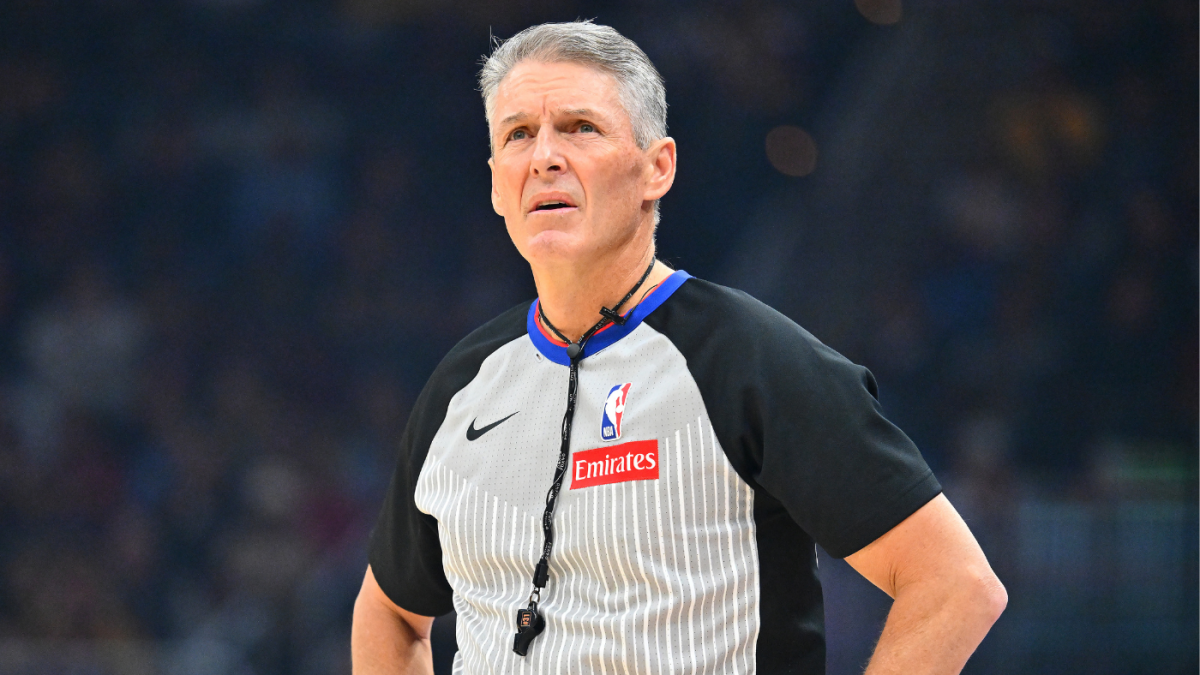An Unexpected Collision: When Officiating Meets Physical Risk
In the high-octane world of NBA playoffs, the spotlight rarely falls on referees beyond their calls and whistles. Yet, during Game 2 of the Western Conference Finals between the Oklahoma City Thunder and Minnesota Timberwolves, veteran referee Scott Foster unexpectedly became center stage in a moment that melded physicality and officiating pressure. Early in the game’s jump ball, Foster suffered a bloody nose after contact with Thunder guard Lu Dort, underscoring a seldom-highlighted dimension of basketball—the physical hazards referees face—and sparking broader reflections on the role and challenges of officiating in intense playoff settings.
Collision Amid Competition: A Snapshot of the Incident
Just under two minutes into this pivotal game, the typical frenzy of competition took an unusual turn. Luguentz Dort, caught in the fierce pursuit of the jump ball, unintentionally struck Foster’s face during his follow-through, causing a visible nosebleed and an immediate halt to the action. With gauze pressed firmly to his nostril, Foster’s quick return demonstrated his professionalism and toughness, yet the incident momentarily shifted attention from players’ tactics to the vulnerability of the official enforcing game rules.
This early disruption, a rare episode in a contest of such magnitude, highlighted the close physical interplay inherent in basketball—not only among players but between athletes and referees sharing the same arena.
Navigating Physical Hazards: The Hidden Side of Officiating
Officiating in basketball is often perceived as a cerebral role—focused on judgment and rule enforcement rather than physical involvement. However, moments like Foster’s injury reveal a contrasting reality. Referees must maintain optimal positioning on the court to accurately monitor fast-moving plays, jump balls, and contested rebounds, often navigating tight spaces where split-second movement can lead to unintended collisions.
Despite the rarity of injuries like Foster’s nosebleed, their occurrence reminds us that officials endure tangible physical risks. Such incidents amplify questions about existing safety protocols and protective measures, emphasizing the need for ongoing vigilance to safeguard these pivotal contributors amid rapid and unpredictable gameplay.
Scott Foster: A Veteran Referee Under the Microscope
Scott Foster’s reputation precedes him—he is regarded as one of the NBA’s most recognizable and polarizing referees. Trusted by the league to manage playoff games of escalating importance, Foster’s presence represents experience and command amid high-pressure environments. Yet his career has been marked by controversial calls that fuel debates among players and fans alike, making him a figure of both respect and scrutiny.
His recent return from a calf injury to officiate this crucial Game 2 reflected the NBA’s confidence in his capabilities. It also highlighted the league’s strategy of employing seasoned officials to ensure consistency and control when stakes are highest.
Game Flow and Psychological Ripples: More Than a Bleeding Nose
Addressing Foster’s injury required a brief suspension of game play, an interruption felt keenly amid playoff intensity. Such breaks, while necessary for health reasons, can influence team momentum and strategy, providing unexpected pauses for reflection or regrouping. Players’ and coaches’ shift in focus toward the referee’s condition underscored the human element behind the officiating role often overlooked during competitive clashes.
Moreover, the incident reinforced the accidental nature of physical contact between officials and players, prompting considerations about safety practices during contested plays where proximity is unavoidable.
Fan and Media Responses: Between Concern and Levity
The incident drew swift media attention, ranging from dramatic descriptions of the injury to lighthearted takes capturing the unique spectacle of a referee’s physical mishap on court. Social media reactions mirrored this duality, combining genuine well-wishes for Foster’s recovery with jokes reflecting his reputation for involvement in intense or unusual game moments.
Foster’s ability to engage humorously with players in subsequent situations, exemplified by his playful banter with LeBron James following a different collision, paints a fuller picture of his resilience and adaptability. These facets contribute to a more nuanced public perception that balances his contentious calls with a personable, relatable presence.
The Stakes of Referee Assignments: Experience Meets Intensity
This episode also illuminates the NBA’s deliberate process in selectivity of playoff officiating crews. Assigning a referee of Foster’s caliber to a high-profile Western Conference Finals game signals the league’s reliance on proven officials capable of withstanding the physical and mental demands unique to such contests.
The incident sparks dialogue about the pressures referees face, the sometimes-overlooked injury risks they bear, and the importance of skilled adjudication in preserving game integrity amid escalating competitiveness.
Closing Reflections: The Human Element at the Heart of Officiating
Scott Foster’s bloodied nose in the heat of a critical playoff game is more than an isolated injury; it is a vivid testament to the complex intersection of athleticism, officiating, and human vulnerability in professional basketball. The event spotlights the resilience required by referees as they navigate not only the challenging dynamics of fast-paced athletic contests but also their own safety and authority under scrutiny.
In an arena where players’ physical battles command headlines, moments like Foster’s injury remind us that officials, too, are active participants subject to the rigors and risks of the game. Their perseverance and expertise remain foundational to basketball’s fairness and flow—qualities sharply embodied by Foster’s prompt return to duty after a painful and unexpected collision.
This incident offers a rare, enlightening glimpse behind the scenes of NBA officiating, inviting fans and analysts alike to recognize and appreciate the often-underestimated challenges referees face while maintaining the delicate balance that keeps the game both thrilling and just.











